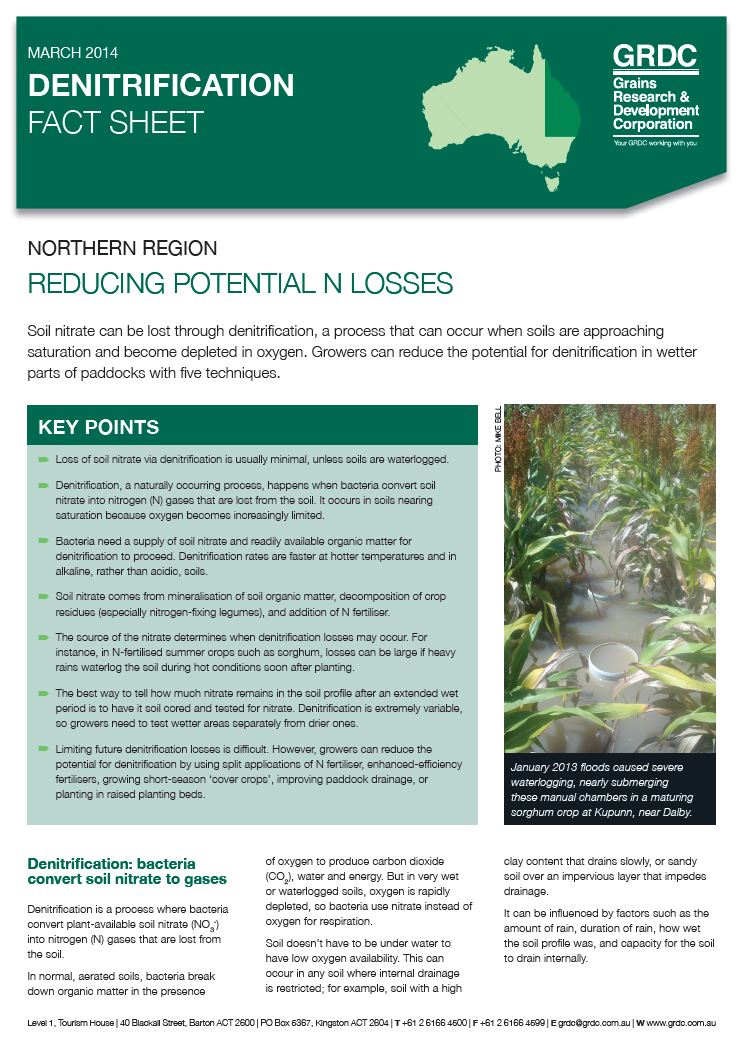Denitrification
Denitrification
Published: 18 Dec 2014

Reducing potential N losses
Soil nitrate can be lost through denitrification, a process that can occur when soils are approaching saturation and become depleted in oxygen. Growers can reduce the potential for denitrifi cation in wetter parts of paddocks with five techniques.
Key Points
- Loss of soil nitrate via denitrification is usually minimal, unless soils are waterlogged.
- Denitrification, a naturally occurring process, happens when bacteria convert soil nitrate into nitrogen (N) gases that are lost from the soil. It occurs in soils nearing saturation because oxygen becomes increasingly limited.
- Bacteria need a supply of soil nitrate and readily available organic matter for denitrification to proceed. Denitrification rates are faster at hotter temperatures and in alkaline, rather than acidic, soils.
- Soil nitrate comes from mineralisation of soil organic matter, decomposition of crop residues (especially nitrogen-fixing legumes), and addition of N fertiliser.
- The source of the nitrate determines when denitrification losses may occur. For instance, in N-fertilised summer crops such as sorghum, losses can be large if heavy rains waterlog the soil during hot conditions soon after planting.
- The best way to tell how much nitrate remains in the soil profile after an extended wet period is to have it soil cored and tested for nitrate. Denitrification is extremely variable, so growers need to test wetter areas separately from drier ones.
- Limiting future denitrification losses is difficult. However, growers can reduce the potential for denitrification by using split applications of N fertiliser, enhanced-efficiency fertilisers, growing short-season ‘cover crops’, improving paddock drainage, or planting in raised planting beds.
Want to link to this publication?
Use www.grdc.com.au/GRDC-FS-N-Denitrification to ensure your link remains current and up-to-date!
Region North
- 409.38 kb Denitrification Fact Sheet (low resolution) Soil nitrate can be lost through denitrification, a process that can occur when soils are approaching saturation and become depleted in oxygen. Growers can reduce the potential for denitrification in wetter parts of paddocks with five techniques.
- 4.92 mb Denitrification Fact Sheet (high resolution) Soil nitrate can be lost through denitrification, a process that can occur when soils are approaching saturation and become depleted in oxygen. Growers can reduce the potential for denitrification in wetter parts of paddocks with five techniques.
Region: North
